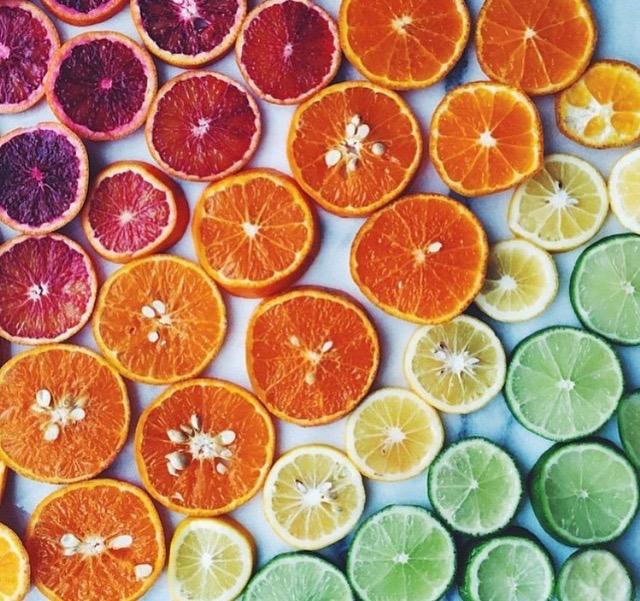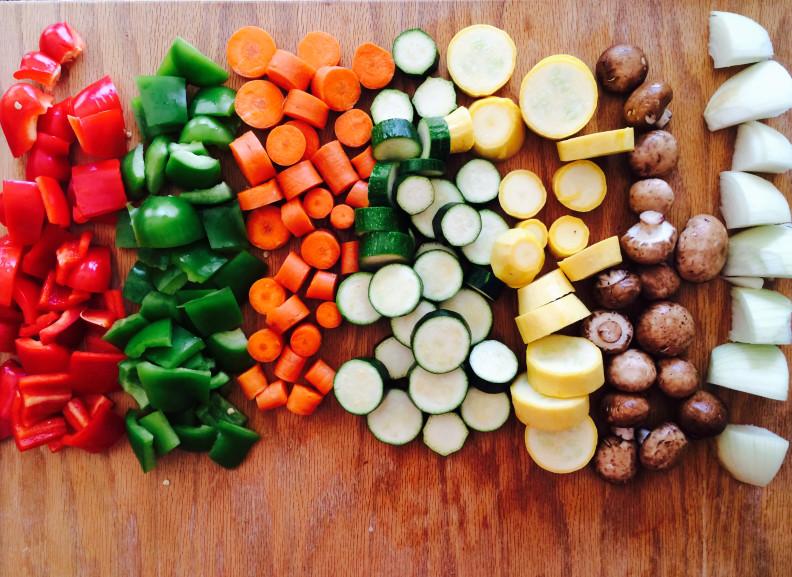Carb cycling involves tracking macros with a food journal or app. You must work out the number of grams of carbohydrates you’ll need to eat every day. This may not be as easy as you imagined. The amount of carbs you should eat will be individual to you. You need to bear several factors in mind. We’ll look more closely at those later.
For now, let’s take a closer look at what a standard carb cycling diet looks like.
What do I eat on a High Carb Day?
On a high carb day, you will usually obtain around 60 percent of your calories from complex carbohydrates. That means, if you’re eating about 1,500 calories daily, around 900 calories are complex carbs.
If you’re doing high energy workouts like interval training, long distance running or sprints, you can add in more carbs. These should take the right form though. You shouldn’t be adding donuts or cake into your regime! Instead, you should give yourself an additional serving of legumes, fruits or whole grains.
The latter are all complex carbs. This means they break down more slowly for a slower release of energy. Simple carbs like sugary cookies and candies break down quickly. This means that you get a super-fast energy rush followed by a crash. You should primarily eat complex carbohydrates on a carb cycling regime.
If you find that you’re struggling to cope with your athletic workouts, try adding another serving into your diet. You should only do this on days when you’re hitting the gym though.
What Do I Eat On A Low Carb Day?
On days when you’re not working out or doing low-key exercise, have a low carb day. On this kind of day, you should switch a couple of your usual carb servings with vegetables. You could also switch some of those carbs with healthy fats or proteins.
Alternatively, you could use a low-carb day as a starting point from which to calculate your high carb days. Usually, 50 grams of carbs daily is enough to reach ketosis. Therefore, you could begin by consuming 50 grams of carbs on low carb days. You can then work up from there, maxing out at 200 grams of carbs daily.
Avoiding the transactional food mindset is very important, however. Thoughts like “30 minutes more running means I can eat more carbs” can be dangerous. It leads to a difficult and disordered relationship with eating and food.
Nevertheless, eating more carbs some days with fewer carbs on other days is how the body regulates itself naturally. Therefore, reducing carbs offers benefits that you can take advantage of.
What Does A Week-Long Carb Cycling Plan Look Like?
The concept of carb cycling involves eating minimal carbs for two days consecutively. This will be followed by a day of eating more carbs. There is a reason for this. When the stored reserves of carbs are due to run out, energy is recharged thanks to a high carb day. This speeds the metabolism and leads to more fat loss.
If you reduce your carbs over two days, your fat stores will be used for energy. Your body will also enter a catabolic state. This means the body starts to use muscle tissue to derive energy from the protein in your muscles.
It’s important to know what to eat over a week if you’re planning to carb cycle. Here is a sample seven-day plan to ensure you obtain all the essential nutrients. You’ll also get enough variety, so you don’t get bored with your meals. If you can adhere to this plan for 30 days, you should experience weight loss benefits.
Day 1 – A Low Carb Day
Breakfast: Almond and citrus fruit salad mixed with berries and yogurt.
Snack: An apple and a protein bar.
Lunch: Salad made with 50 grams of quinoa, 100 grams of peas and tomatoes and two hard-boiled eggs.
Snack: A banana and a scoop of walnuts.
Dinner: A sliced stir-fried chicken breast with sliced carrots, courgettes and green beans. Served with 70 grams of quinoa.
Snack: Two oatcakes.
Calorie Total – 1880 Carbs Total – 226 grams Protein Total – 108 grams Fat Total – 67 grams
Day 2 – Low Carb Day
Breakfast: Seed and apple muesli made with two tablespoons of rolled oats, sunflower seeds, sesame seeds and pumpkin seeds. Served with two tablespoons of natural yogurt and a small apple.
Snack: A banana and scoop of walnuts.
Lunch: A whole meal pitta stuffed with half an avocado, one tablespoon of cottage cheese and tuna.
Snack: A pear.
Dinner: A grilled salmon steak with half a sliced lime on top. Served with 100 grams broccoli, 70 grams of quinoa and 75 grams of peas.
Snack: An apple.
Calorie Total – 1891 Carbs Total – 170 grams Protein Total – 131 grams Fat Total – 81 grams
Day 3 – High Carb Day
Breakfast: 60 grams of oats, soaked in water with 200 grams of berries. Serve with a pot of natural yogurt and a tablespoon of sunflower seeds.
Snack: A peach.
Lunch: A baked potato stuffed with a tablespoon of hummus. Serve with salad made from sliced cucumber, tomato, red pepper and mixed leaves. A banana. Snack: A protein bar and an apple.
Dinner: A grilled cod fillet served with 250 grams of boiled potatoes, 100 grams of carrots and peas.
Snack: Three oatcakes.
Calorie Total – 1801 Carbs Total – 323 grams Protein Total – 78 grams Fat Total – 40 grams
Day 4 – Low Carb Day
Breakfast: three eggs beaten with two tablespoons of natural yogurt. Add half a red pepper, half a courgette and half an onion as well as one tablespoon of peas. Cook in a pan.
Snack: An apple and a handful of pumpkin seeds.
Lunch: A can of salmon mixed with a can of butter beans. Serve with a salad of lettuce leaves, tomato, sugar snap peas, and onion.
Snack: A nectarine.
Dinner: A grilled turkey breast with grilled courgette, carrot, red pepper, and onion.
Snack: A banana and 80 grams of grapes.
Calorie Total – 1812 Carbs Total – 159 grams Protein Total – 143 grams Fat Total – 72 grams
Day 5 – Low Carb Day
Breakfast: Two boiled eggs with two whole meal pitta slices spread with Marmite and butter.
Snack: An apple and a pear.
Lunch: Avocado and tuna mash served with salad leaves, cucumber, tomato, carrot, and courgette.
Snack: A peace and an oatcake topped with cucumber and cottage cheese.
Dinner: A can of salmon mixed with a can of chopped tomatoes, tomato puree, carrot, red pepper, and courgettes. Simmered for 10 minutes and served.
Snack: A banana.
Calorie Total – 1804 Carbs Total – 165 grams Protein Total – 124 grams Fat Total – 77 grams
Day 6 – High Carb Day
Breakfast: 5 tablespoons of natural yogurt. Mix with 50 grams of rolled oats, 200 grams of berries, 1 tablespoon of honey and a sliced pear.
Snack: A whole meal pitta bread stuffed with a tomato and cottage cheese.
Lunch: A chickpea salad made with half a can of chickpeas.
Snack: Four oatcakes with sliced apple and peanut butter.
Dinner: A grilled chicken breast with steamed broccoli, 70g quinoa and 100g green beans.
Snack: A banana.
Calorie Total – 1845 Carbs Total – 249 grams Protein Total – 122 grams Fat Total – 44 grams
Day 7 – Low Carb Day
Breakfast: Two poached eggs with two portobello mushrooms and two tomatoes.
Snack: A pot of natural yogurt, an orange and a peach.
Lunch: A pitta stuffed with cottage cheese, avocado, cucumber, tomato, lettuce, and peanut butter.
Snack: An apple with a handful of sunflower seeds and pumpkin seeds.
Dinner: Poached salmon with a courgette, 200 grams tomatoes and sugar snap peas.
Snack: A banana and two oatcakes.
Calorie Total – 1820 Carbs Total – 157 grams Protein Total – 98 grams Fat Total – 94 grams



